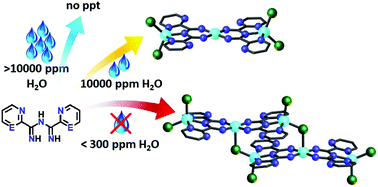Controlling the nuclearity and topology of cobalt complexes through hydration at the ppm level†
Abstract
Through ppm level control over the degree of hydration (e.g., 300 ppm vs. 10 000 ppm), the nuclearity and topology of cobalt complexes can be tailored, as demonstrated here. This was achieved by employing N-imidoylamidine ligands, which possess both bidentate and tridentate coordination sites, affording mono-, tri- and hexanuclear cobalt complexes. Structural characterization and magnetic analysis were used to elucidate the spin state of the cobalt ions, which reveal a unique combination of low and high spin states within the polynuclear systems.



 Please wait while we load your content...
Please wait while we load your content...